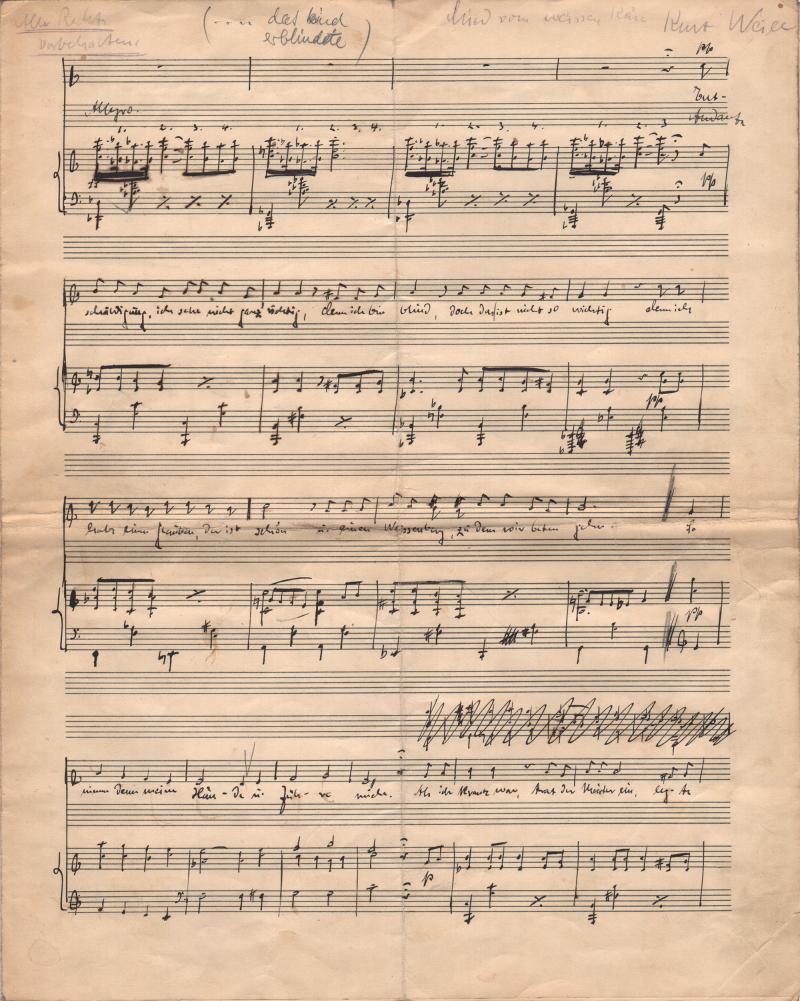Assignment 5 - Jasmine Yuan
Final Project Connections
Updates
I looked into the book “Passing Illusions: Jewish Visibility in Weimar Germany” by Kerry Wallach, which provides some insight into the presentation of Jewishness during the time period in Germany. Wallach examines constructs of German-Jewish identity, and the reasons for concealing and revealing this identity through performance, cultural products, and other public displays. The Weimar Republic represents an opening up of possibilities as well as a closing in fueled by nationalism and the end of the war. With the renewed sense of identity in the Jewish community in the Weimar era came an increase in hostility and anti-Semitic sentiments.
I also explored the book “Three-Way Street: Jews, Germans, and the Transnational”, which examines the transnational identity of German-Jews. Rosenfeld’s essay “Between Memory and Normalcy: Synagogue Architecture in Postwar Germany” discusses the significance of the construction history of synagogues and how these buildings of worship reflect the community’s identity. The architecture is shaped by these postwar cultural and societal trends. Weiss’s essay “Klezmer in the New Germany: History, Identity, and Memory” explores the connections of traditional Klezmer music to Jewish settlements and the differences in identities and associations with native German-Jews. The music is significant due to its politically charged nature, cultural ties, and public reception in Germany.
The Jewish Life in Berlin project should explore these societal issues, and how they are represented through public performance and entertainment culture. These will be viewed and revealed through the lens of the figures that will be represented on the website.
Connections
The network of the archive should contain nodes of figures and places that are connected by interactions.
-
The Comedian Harmonists are connected to many areas of the music network in 1920s Berlin. Harry Frommermann, a Jewish member and founder of the Comedian Harmonists can act as a node in the network. The Comedian Harmonists performed at the Kabarett der Komiker in October 1928, making a crossover to the cabaret scene. The Comedian Harmonists are also the first popular-music group to play in the Berlin Philharmonic hall, connecting to the concert music scene by performing popular music in a formal concert venue.
-
Friedrich Hollaender composed “Just Suppose” and “Lavender Song”, which were performed in the cabaret. These songs are highly topical, referencing homosexuality and the “liberal culture” of politics in the cabaret. Several figures who have performed Hollaender’s songs in the cabaret include Valeska Gert, a cabaret actress, and Curt Bois, a cabaret performer. Hollaender not only composed music for the cabaret but also for theater productions and films. Hollaender later had to leave Nazi Germany in 1933 due to his Jewish descent.
-
Hollaender is connected to Berlin’s Metropol-Theater, which developed into an operetta stage in the 1920s. Hollaender’s father, Victor Hollaender, composed operettas and revues for the theater. The Metropol-Theater revues were important in shaping popular entertainment culture with their depiction of political satire and parody. Its messages were directly influential to other forms of popular media and music genres. The cabaret, popular songs, and operettas echoed messages of the Metropol Theater revues. (https://jewishlifeinberlin.slack.com/messages/CGG5SU7UJ/files/FGJLWP9RR/)
-
Friedrich Hollaender, Hanns Eisler, Kurt Weill, and Bertolt Brecht collaborated on revues and were involved in creating works for the theater. Kurt Weill composed operas, film music, and symphonic music for orchestra and choir. He developed productions for the theater such as The Threepenny Opera with Brecht, which contained political themes. Weill also faced financial hardships. Weill joined the Novembergruppe in 1922, which contained radical Berlin artists including Hanns Eisler.
First page of Weill’s manuscript:

- Hanns Eisler studied under Arnold Schoenberg from 1919 to 1923, and he composed classical works for concert performance using Schoenberg’s twelve-tone technique. Later on, his music began incorporating political themes as well as drawing popular music influences from jazz and the cabaret. Eisler’s music acts as a transition from and a connection between formal classical concert music into the popular music of Weimar’s jazz age. Additionally, Eisler wrote music for several Brecht plays. (https://www.broadwayworld.com/article/Previously-Unknown-Kurt-Weill-Song-Discovered-in-Berlin-Archive-20171106 https://www.nytimes.com/2000/02/27/arts/music-when-cabaret-had-an-edge.html)
Visual layout & audience experience ideas
- Having the nodes in the network be represented by tables in a cabaret
- Having a dynamic experience for the user, where each time they explore the archive, they traverse the network in a different path.
- First time users can enter the network by experiencing a song playing at the beginning. Frequent users can have an option to directly enter the network instead of learning through the randomly generated song.
Katrin sent me these links to sheet music today that I will delve into later:
- https://fau.digital.flvc.org/islandora/search/?type=edismax&collection=fau%3Apsm
- http://jmwc.org/publishers-scores-and-music/
- https://www.jwpepper.com/sheet-music/jewish-songbooks.list
- https://yivo.org/music
- https://library.brown.edu/dps/curio/category/collections/yiddish-sheet-music/